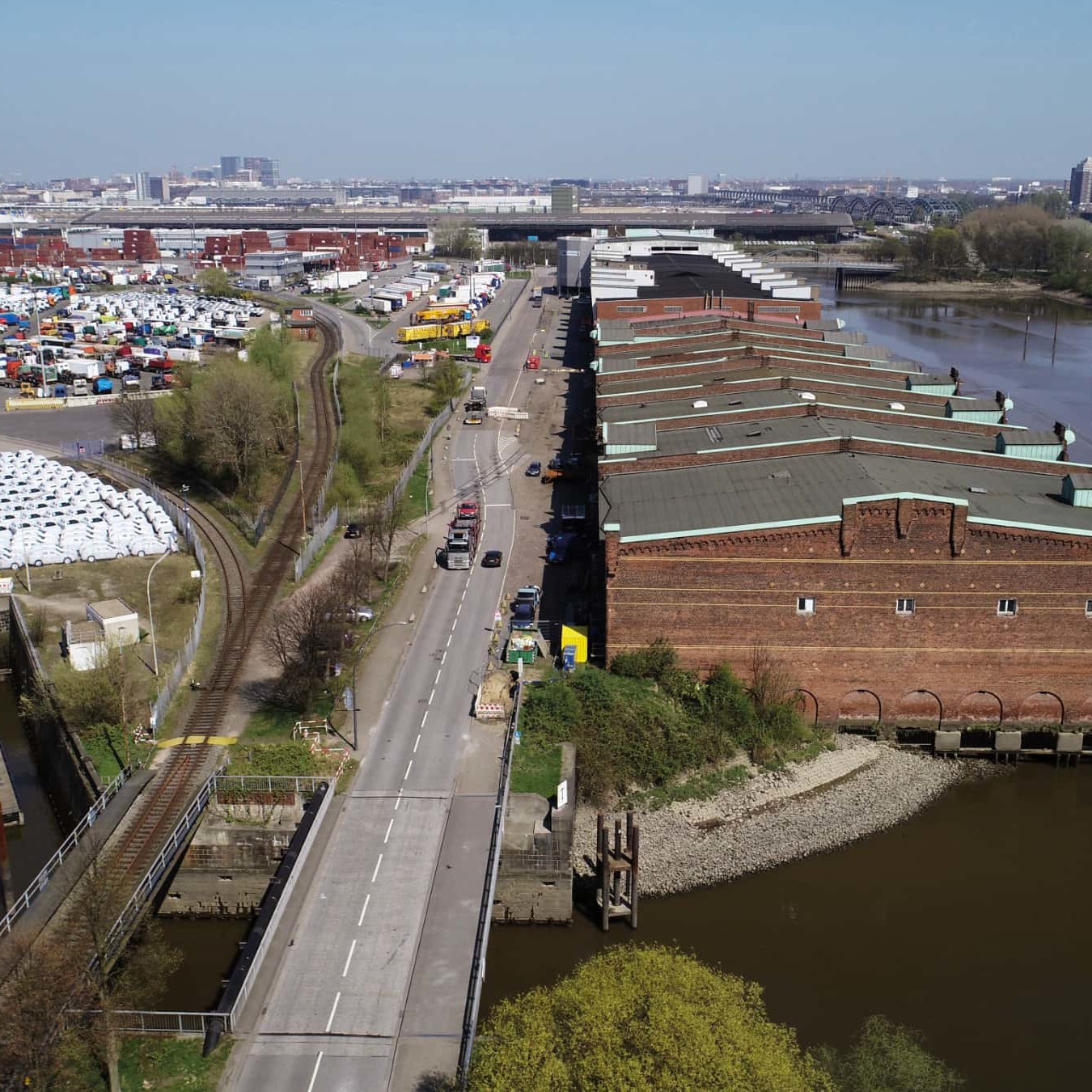Between city and port – the starting conditions for Grasbrook
Challenges and opportunities for urban development are closely related when it comes to developing Grasbrook. The new neighborhood is being created on former port land, and more than half of the Kleiner Grasbrook area will remain part of the port. Dealing intelligently with the noise pollution from the rail and road areas as well as industry are necessary preconditions for creating a new place to live and work. It is just as important to create new physical and social connections between Veddel and the new Grasbrook neighborhood to enable the two parts of the city to grow together.
NOISE POLLUTION
The chief sources of noise are the Elbe bridges, rail traffic and the major roads on the eastern boundary of the area. It is important here that a good urban development plan minimizes the noise pollution, both for residents and in the public open spaces.
NATURE AND LANDSCAPE
The majority of the former port area is built on and sealed. There are, however, isolated semi-natural areas, e.g. regenerating woodland. An ecological survey provides the basis for so-called "nature-based solutions" when planning open spaces.
TRANSPORT CONNECTIONS
The future Grasbrook neighborhood is still extremely isolated when it comes to transport connections. Extending the U4 subway line with a new “Grasbrook” station is a precondition for efficient public transport and minimizing car use in the neighborhood.
LINKING VEDDEL AND GRASBROOK
At the moment the rail tracks and the "Am Saalehafen" and "Am Moldauhafen" streets represent major barriers between Veddel and Grasbrook. New physical connections are the most important preconditions for convergence between these two neighborhoods. Various tunnel and/or bridge links are currently under examination.
FLOOD PROTECTION
The HafenCity flood protection concept, enabling measures to be developed in stages while retaining the area’s special association with the water and integrating vehicle parking into the plinths of buildings, is also being adopted in the Grasbrook neighborhood. There is consideration of whether to adapt the protection level in view of what may be very long-term increases in high-water levels (at least 9 meters above mean sea level).
HERITAGE BUILDINGS
The future Grasbrook neighborhood is home to four listed buildings in all, among them the ensemble formed by warehouses F and G, the banana ripening shed (warehouse D) and the Freihafenelbbrücke bridge. Of particular historical importance is warehouse G (built 1903) on Dessauer Ufer, which acted as an outpost of the Neuengamme Concentration Camp from 1944 to 1945.








